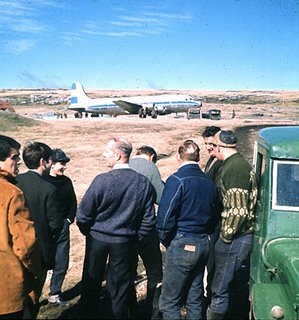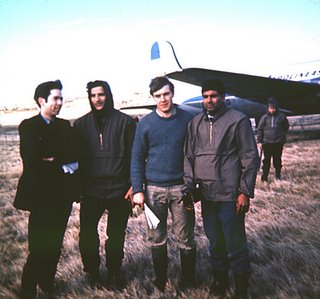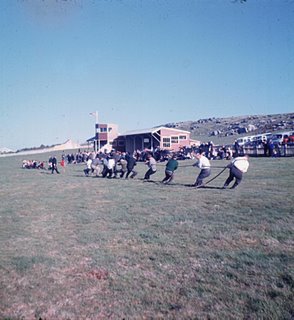
Called up in my "gap year" - preview photos
Falkland Islands Hijack 1966
Full story - see below
Photo 1 - spectators keeping their distance two or three hours after the landing.
Photo 2 - two of the highjackers posing with my colleague Geoff and a construction
 worker.
worker.Photo 3 - the Aerolinas Argentinas DC4 crash landed on the Port Stanley racecource. - shown in December 1966 during the Tug of War contest.




